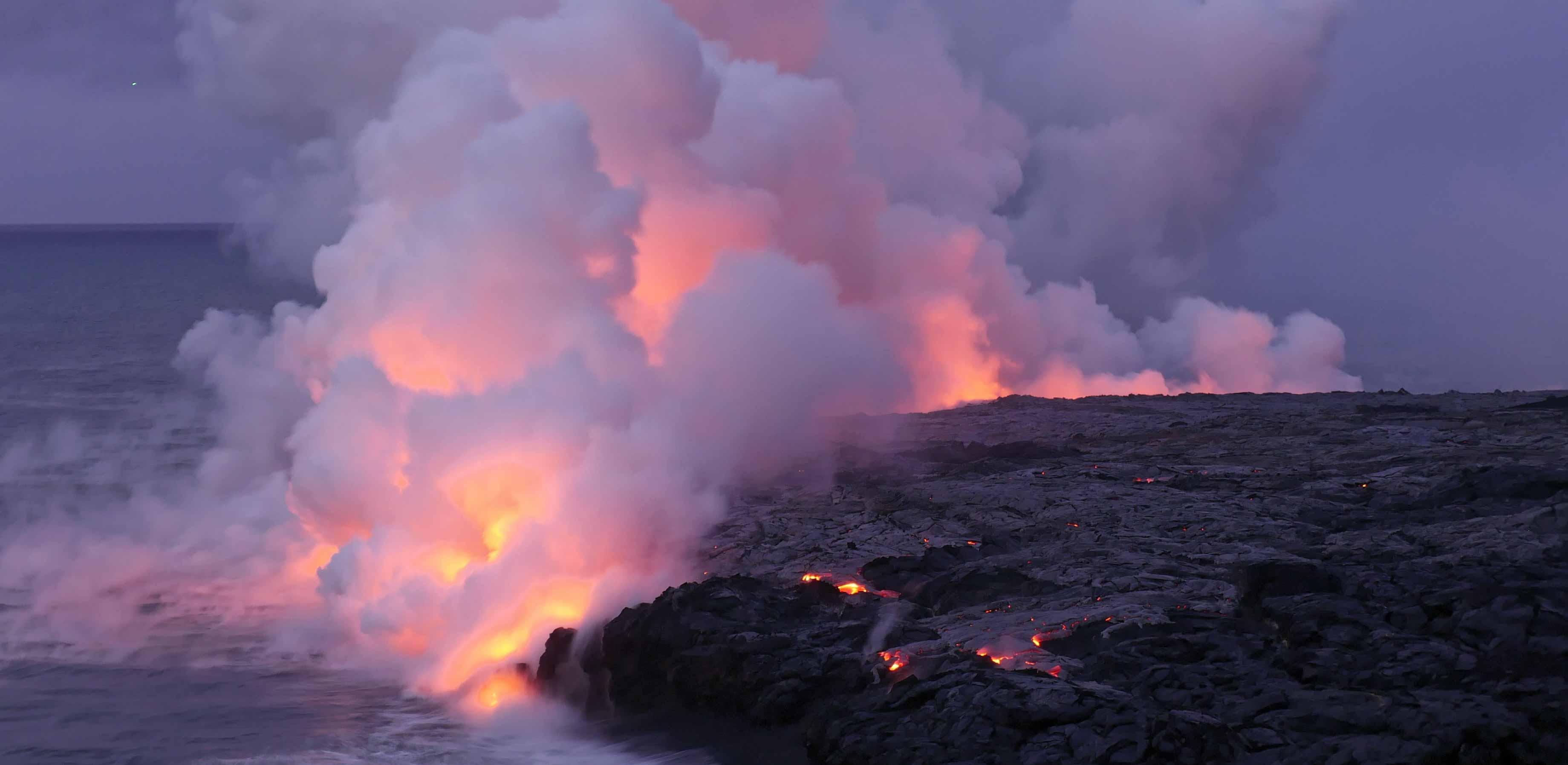
Submitted by Dr C.M. Martin-Jones on Wed, 03/03/2021 - 12:07
Scientists may soon be able to tell whether distant exoplanets are home to volcanoes, and even the early stages of life, just by looking for hydrogen gas in their atmospheres.
Research from Cambridge Earth Sciences has found that volcanic activity on planets with a similar size and interior to Earth can create atmospheres with a few percent of hydrogen, a greenhouse gas which is thought to warm planets enough to make them habitable and to provide conditions amenable to the origin of life.
The study, published in Earth and Planetary Science Letters, reports that the oxygen in a planet’s interior has a key bearing on the amount of hydrogen gas that volcanoes release to the atmosphere.
The simulations show that for a planet like Mars, where the mantle rocks contain less oxygen than Earth’s interior, higher levels of atmospheric hydrogen, of up to 2-8%, could be sustained.
The findings highlight the role of volcanism in generating atmospheric hydrogen, but suggest there wouldn’t have been enough of the gas to warm Earth during it’s early history - when the Sun shone at only a fraction of its current brightness.
“Detecting hydrogen in the atmospheres of rocky exoplanets could be indicative of some kind of geological cycle – the process of recycling rocks and re-distributing the elements and nutrients needed to make life across our planet”, said lead author Philippa Liggins, PhD student in the Department of Earth Sciences.
The habitable, ‘Goldilocks’, zone – the area surrounding our Sun where it is neither too hot nor too cold for liquid water to exist on the surface of orbiting planets – is thought to end just beyond Mars. But the finding that volcanism can produce appreciable quantities of hydrogen places a lot of planets previously thought to be too cold to support detectable life back into play.
Hydrogen isn’t a greenhouse gas in itself but, when mixed with nitrogen or carbon dioxide in the right quantities, it can regulate and warm conditions by enhancing the greenhouse effect. Some scientists have suggested that hydrogen may have acted, alongside other gases, like a thermal blanket during Earth’s early history. At this time, the Sun shone at just 70% of its current brightness. Earth should have been completely frozen and yet there is abundant geological evidence for the presence of liquid water – an apparent contradiction dubbed ‘The Faint Young Sun Paradox’.
Liggins and co-authors Dr Oliver Shorttle and Dr Paul Rimmer, also from the University of Cambridge, used a new thermodynamic model to simulate a range of different magma and volatile chemistries alongside varying rates of gas release and entrapment in the atmosphere.
The results show that, whilst volcanism could produce atmospheres with roughly 0.2-3% hydrogen, this wouldn’t have been enough to warm the young Earth. “Although Earth was warm enough to sustain surface liquid water at this time, it likely wasn’t because of hydrogen – our model can’t produce the roughly 10% hydrogen required for this. So in this case, other greenhouse gases were probably more important”, said Liggins.
Liggins also ran simulations for Mars, which has an oxygen-poor mantle rocks compared to Earth. Less oxygen is available in the magma erupted from Martian volcanoes, meaning more straight hydrogen gas (H2) is released to the atmosphere, rather than it reacting with the volcanic oxygen to make water vapour (H2O).
They found that Martian-type volcanoes could sustain atmospheres with approximately 2-8% hydrogen, enough to deglaciate the Red Planet. The Faint Young Sun Paradox also holds true for Mars, where there is more evidence for liquid water in spite of dimmer, colder conditions. The authors however caution that this hypothesis is right at the working limits of their model, “our estimates come with a lot of uncertainty. We still need more data on the interior of Mars, particularly the water content of Martian magmas”, said Liggins.
The team also explored where else the hydrogen could be coming from. Some methane producing bacteria can also produce hydrogen, as well as other geological processes like metamorphism – which releases hydrogen as new minerals form under heat and pressure. Meteor impacts can also send water and hydrogen into the atmosphere, but after a big initial uptick, these hydrogen levels quickly tail off. They found that only bacteria can produce hydrogen levels comparable to that from volcanoes, but the flux is a less stable over geological time than volcanoes.
“The key is to find a source of hydrogen that could be sustained over long time periods, and volcanoes are the most consistent way of doing this”, said Liggins. Planets with hydrogen in their atmosphere have long puzzled scientists, logic says it shouldn’t be there, it is such a light element that it should have been lost early in the planet’s life - something must be continually topping up the levels.
The team now plan to build upon their model and look at other atmospheric gases, not just hydrogen. They hope to be able to give more detailed predictions of a range of gases in a planet’s atmosphere, based on the composition of the planet’s interior and how much oxygen is in it. “If we can tell the difference between oxygen-rich and oxygen-poor mantles from their atmospheres then that means we can start to learn more about the geology of an exoplanet - when we can’t actually see the planet itself, just it’s atmosphere”.
Liggins, P., Shorttle, O., & Rimmer, P. B. Can volcanism build hydrogen-rich early atmospheres?. Earth and Planetary Science Letters, 550, (2020). DOI: https://doi.org/10.1016/j.epsl.2020.116546
